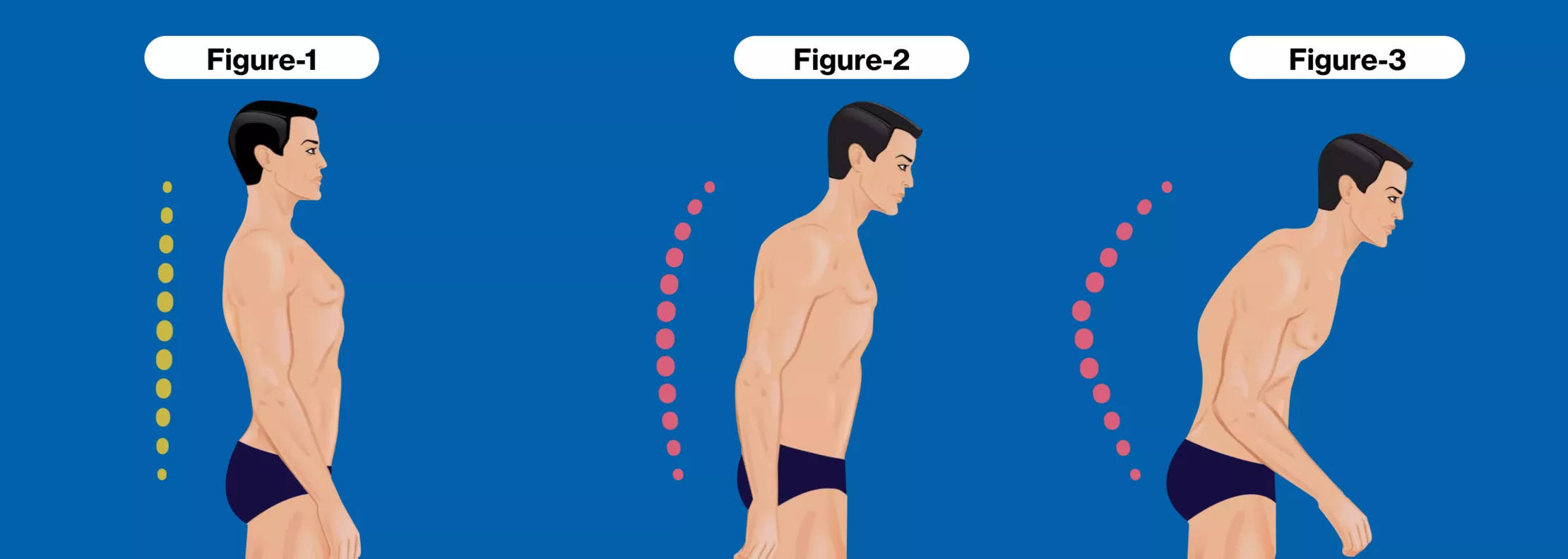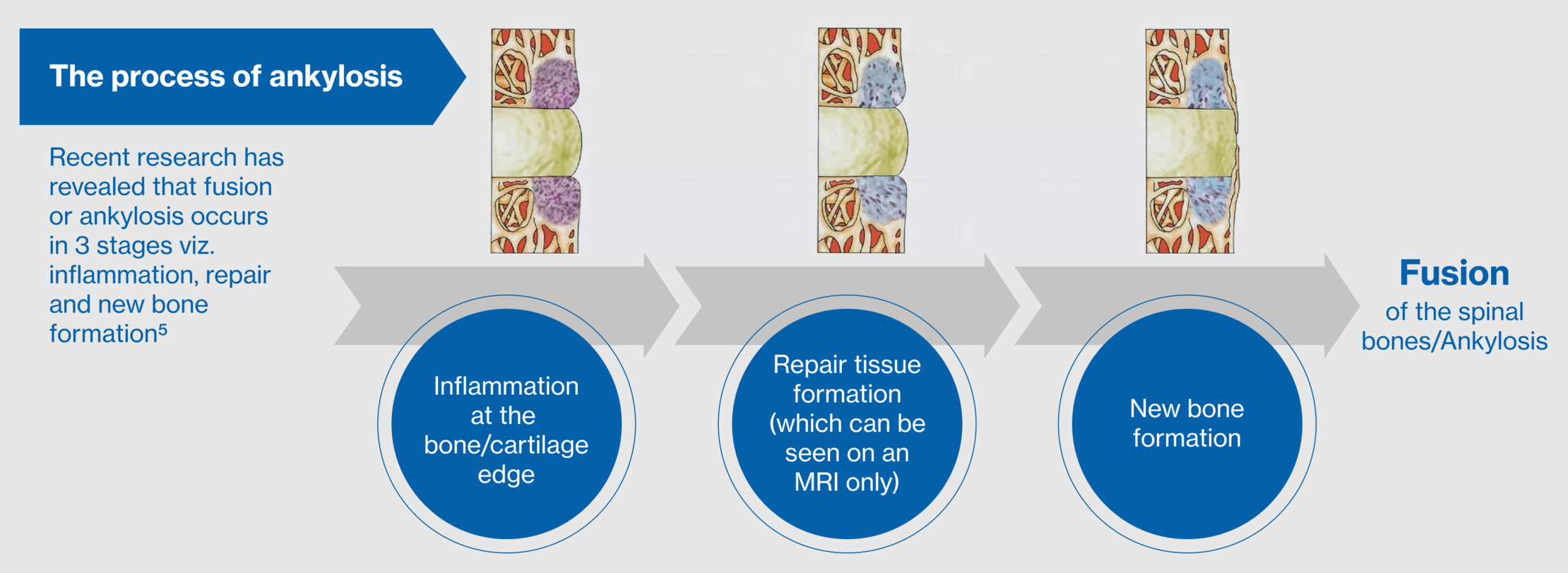Ankylosing Spondylitis: What is the big deal?
Look carefully at these images. What do you see?

This iconic imagery of the progressively bent person has long been associated with Ankylosing Spondylitis. Figure 3 represents a person with a fused spine.
How does the disease progress to fusion?
The long standing inflammation characteristic of Ankylosing Spondylitis may lead to increasing damage to the spinal bones over time and could ultimately result in fusion of the spinal bones or ‘ankylosis’.[1]
Increasing pain, stiffness and immobility are usually the signs of progressing disease.[2][3][4]

How is Ankylosing Spondylitis different from other arthritic diseases?
Other arthritic diseases (like rheumatoid arthritis) result in bone destruction, but Ankylosing Spondylitis involves both bone destruction and new bone formation which results in 'Fusion'.[5]
References
- Lories RJU and Schett G. Rheum Dis Clin N Am 2012;38:555–567
- Sieper J, et al. Ann Rheum Dis 2002;61(Suppl III):iii8–iii18
- Arthritis and Ankylosing Spondylitis Available [Online] at: https://www.webmd.com/back-pain/guide/ankylosing-spondylitis#1 Accessed on 20th Sep 2021
- Gran JT, et al. British Journal of Rheumatology 1997;36:766-771
- Magrey MN and Khan MA. Curr Rheumatol Rep 2017;19:17
Disclaimer: This material is not meant to replace professional advice from HCPs. Please consult your doctors/physiotherapist if you have any questions or before undertaking any physical activities.
Curated Tags